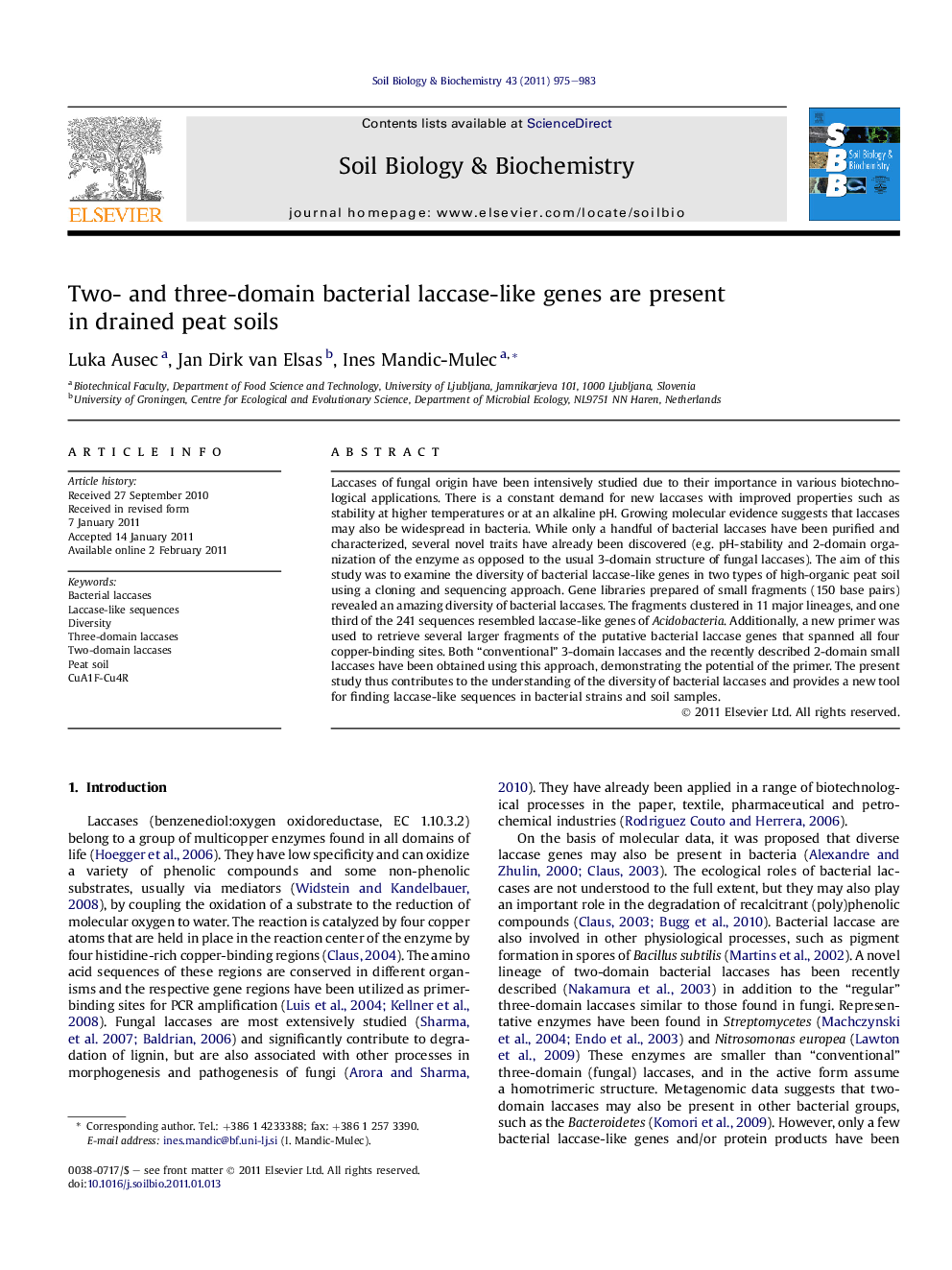| Article ID | Journal | Published Year | Pages | File Type |
|---|---|---|---|---|
| 2025517 | Soil Biology and Biochemistry | 2011 | 9 Pages |
Laccases of fungal origin have been intensively studied due to their importance in various biotechnological applications. There is a constant demand for new laccases with improved properties such as stability at higher temperatures or at an alkaline pH. Growing molecular evidence suggests that laccases may also be widespread in bacteria. While only a handful of bacterial laccases have been purified and characterized, several novel traits have already been discovered (e.g. pH-stability and 2-domain organization of the enzyme as opposed to the usual 3-domain structure of fungal laccases). The aim of this study was to examine the diversity of bacterial laccase-like genes in two types of high-organic peat soil using a cloning and sequencing approach. Gene libraries prepared of small fragments (150 base pairs) revealed an amazing diversity of bacterial laccases. The fragments clustered in 11 major lineages, and one third of the 241 sequences resembled laccase-like genes of Acidobacteria. Additionally, a new primer was used to retrieve several larger fragments of the putative bacterial laccase genes that spanned all four copper-binding sites. Both “conventional” 3-domain laccases and the recently described 2-domain small laccases have been obtained using this approach, demonstrating the potential of the primer. The present study thus contributes to the understanding of the diversity of bacterial laccases and provides a new tool for finding laccase-like sequences in bacterial strains and soil samples.
Research highlights► New PCR-primer Cu4R was developed to amplify bacterial laccase genes. ► Diversity of bacterial laccases in peat soils was analyzed using gene libraries. ► High diversity of both 2- and 3-domain laccases was described. ► Novel clusters of bacterial laccase genes were identified.
